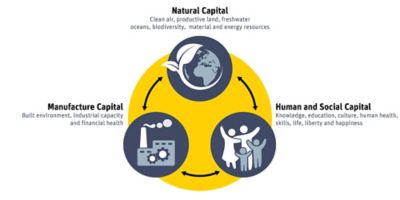-
United States -
United Kingdom -
India -
France -
Deutschland -
Italia -
日本 -
대한민국 -
中国 -
台灣
-
Ansys s'engage à préparer les étudiants d'aujourd'hui à la réussite, en leur fournissant gratuitement un logiciel de simulation.
-
Ansys s'engage à préparer les étudiants d'aujourd'hui à la réussite, en leur fournissant gratuitement un logiciel de simulation.
-
Ansys s'engage à préparer les étudiants d'aujourd'hui à la réussite, en leur fournissant gratuitement un logiciel de simulation.
-
Contactez-nous -
Carrières -
Étudiants et universitaires -
-
S'inscrire -
Déconnexion -
Espace client -
Support -
Communautés partenaires -
Contacter le service commercial
Pour les États-Unis et le Canada
+1 844.462.6797
-
ANSYS BLOG
August 28, 2019
What is Social‒Life-Cycle Assessment?
The need for sustainable products has dramatically increased over the past 10 years, directly impacting the world of product design. The next generation of engineers will need the appropriate skills to be successful in this age of sustainable design.
The challenge is that sustainability is complex — and engineering curricula are already full. So, how do we effectively teach sustainable design?
We can take better care of our world by conducting sustainable product design.
One option is by teaching engineers how life-cycle costing (LCC), social‒life-cycle assessment (LCA) and environmental-LCA can support the integration of sustainability into design.
The Complexity of Sustainability
Sustainability has environmental, economic and social dimensions — all of which are highly interconnected. They comprise three fundamental components:
- Natural capital
- Human capital
- Manufacture capital
The three sustainability capitals and how they affect design
A capital is an asset that can be built up, conserved, spent or exchanged for other goods and services. The natural, human and manufacture capitals all need to be considered when judging the sustainability of a design.
Economic life-cycle costing (LCC) and environmental‒life-cycle assessments (LCA) provide practicing engineers with tools to understand and incorporate these capitals into the design of a product’s life-cycle. These techniques are complex and difficult to incorporate into college courses. To address this, CES EduPack has an Eco-Audit tool that helps users assess the ecological and financial impact of a product at different stages of its life. While this tool is not as robust (nor does it serve to replace) an environmental-LCA, it enables students to begin to understand the importance of incorporating these capitals into product design.
None of the tools mentioned above, however, assess human and social capital. By leaving these capitals out of the design process, engineers can miss various human and social impacts caused by a product, including:
- Poor working conditions
- Unfair manufacturing practices
- Human rights violations
A social-LCA could be the key to designing truly sustainable products and manufacturing processes.
What is a Social‒Life-Cycle Assessment?
Social-LCA explores the behavior of the companies making products. It also assesses the social/geopolitical norms of the nations in which the product is manufactured, used and disposed. In comparison, environmental-LCA assesses the ecological impact of a product’s manufacture, use and disposal.
The United Nations Environmental Programme (UNEP) modeled social-LCA methodologies after environmental-LCA. By utilizing these methodologies, alongside existing environmental-LCA tools, engineers can begin to fully address the sustainability of products and designs.
Ansys Granta is presenting a Social Audit Tool that uses social-LCA guidelines. The Social Audit Tool:
- Assembles and scales social data between 1 (worst practice) to 100 (best practice)
- Sets hotspot thresholds
- Assesses the well-being of one or more stakeholder groups to flag social hotspots
A look-up table that ranks nations by social-impact categories within the Social Audit Tool
To learn how to incorporate social-LCA into classrooms and design, register for the webinar Social‒Life-Cycle Assessment — what is it and how to teach it? To learn about other tools that can help you choose sustainable design materials, read Material Intelligence with Ansys Granta.













